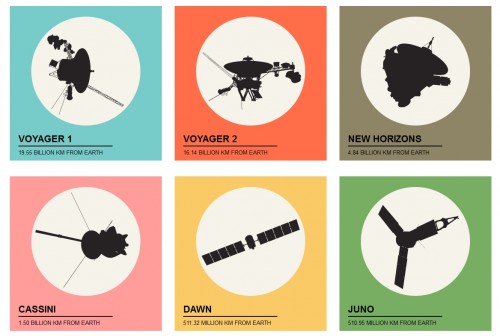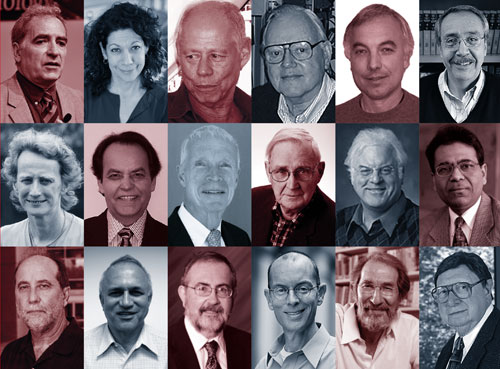Tag archives: publishing
The May 2016 issue of Physics World is now out
 By Matin Durrani
By Matin Durrani
Physics stretches from the small to the large, from the simple to the complex and from low energy to high. It spans the entire alphabet too, with this month’s issue of Physics World including everything from the race to produce anti-atoms (A) at the CERN particle-physics lab near Geneva to a study of the physics of zombies (Z).
Zombies don’t exist, obviously. But we look at two physicists – Alex Alemi and Matt Bierbaum – who have studied the statistical physics of how zombies spread. As science writer Stephen Ornes explains, their interest emerged from a fun student project, but has led to a paper in a leading peer-reviewed journal and helped generate a wider appreciation of statistical physics.
If you’re a member of the Institute of Physics (IOP), you can now enjoy immediate access to the new issue with the digital edition of the magazine in your web browser or on any iOS or Android mobile device (just download the Physics World app from the App Store or Google Play). If you’re not yet in the IOP, you can join as an IOPimember for just £15, €20 or $25 a year to get full access to Physics World digital.
View all posts by this author | View this author's profile
The February 2016 issue of Physics World is now out
By Matin Durrani
Welcome to the February 2016 issue of Physics World magazine.
As I explain in the video above, this month we have a package of articles looking at some of the issues surrounding peer review, including a news-analysis piece by Physics World news editor Michael Banks, who talks to a range of figures in physics and publishing with views on this subject.
Our cover feature this month is on the new interdisciplinary science of “network physiology”. Elsewhere in the issue, John Campbell from the University of Canterbury in New Zealand looks at Rutherford’s secret work in the First World War using sonar to spot submarines, while science writer Matthew Francis looks at efforts to rewrite the rules of gravity.
Keep it brief
By James Dacey
“Brevity is a great charm of eloquence,” said the great Roman orator Cicero. A new study published today suggests that researchers would be wise to follow Cicero’s advice when it comes to choosing a title for their next academic paper. Data scientists at the University of Warwick in the UK analysed 140,000 papers and found that those with shorter titles tend to receive more citations.
Similar studies have been carried out in the past leading to contradictory results. But Adrian Letchford and his colleagues have used two orders of magnitude more data than previous investigations, looking at the 20,000 most cited papers published each year between 2007 and 2013 in the Scopus online database. Publishing their findings in Royal Society Open Science, Letchford’s group reports that papers with shorter titles garnered more citations every year. Titles ranged from 6 to 680 characters including spaces and punctuation.
View all posts by this author | View this author's profile
The admiral of the string-theory wars, add-male-author-gate, the Einstein font and more…

Julie Peasley, creater of the Particle Zoo. (Courtesy: CERN)
By Hamish Johnston
Peter Woit is lauded by some for having the courage to speak the truth to the physics establishment, while others see him as an enemy of science. Woit writes the Not Even Wrong blog, which has the same title as a controversial book he once wrote about the merits of string theory. In an article in the latest issue of Nautilus, Bob Henderson profiles Woit and his three decades of doubt over various incarnations of the theory that culminated about 10 years ago in the “string wars”. Henderson’s article is called “The Admiral of the String Theory Wars” and provides a fascinating insight into how the rise of string theory caused Woit to switch from physics to mathematics and his relationships with string theorists – some of whom work in the same building as Woit at Columbia University.
Heavy-metal Higgs, meet the Publons, Stephen Hawking’s galactic tour and more
By Tushna Commissariat and Hamish Johnston
I’m sure that most of you have wondered what the Higgs boson would sound like if it were a heavy-metal song. Now you can turn it up to 11 (TeV that is) courtesy of CERN physicist and guitarist Piotr Traczyk, who has “sonified” data from two plots from the CMS experiment that were presented at the Higgs discovery seminar on 4 July 2012. His heavy-metal ditty is based on gamma–gamma and 4-lepton data from CMS and after you listen to his excellent song in the above video, you can find out more about how it was created by reading this entry by Traczyk on the Cylindrical Onion blog.
View all posts by this author | View this author's profile
A journal for brief ideas, Heisenberg’s mirror, space-mission stickers and more

Mission accomplished: these graphics were created by Ariel Waldman and Lisa Ballard. (Courtesy: spaceprob.es)
By Hamish Johnston
“Dr Heisenberg’s Magic Mirror of Uncertainty” is the name of a series of photographs taken in 1999 by the American photographer Duane Michals. The picture over at that link is lovely, but I don’t really see the connection to quantum mechanics. I suspect my artist friends would accuse me of being a scientific literalist, which doesn’t bother me one bit.
More to my liking are the graphics pictured above, which have been created by Ariel Waldman and Lisa Ballard. The pair run a website called spaceprob.es, which “catalogues the active human-made machines that freckle our solar system and dot our galaxy”. Here is their page on Voyager 2, which is packed with facts about the mission’s instruments and many accomplishments. These and other illustrations of space missions can be bought as stickers and posters – the perfect gift for the space enthusiast in your life.
Read all about it
By Michael Banks
 The 71-year-old theoretical physicist Paul Frampton, who was arrested in Argentina in 2012 with 2 kg of cocaine in his luggage, has released his own version of events.
The 71-year-old theoretical physicist Paul Frampton, who was arrested in Argentina in 2012 with 2 kg of cocaine in his luggage, has released his own version of events.
The British-born physicist was in Argentina after thinking he had struck up a correspondence on the Internet with Czech-born lingerie model Denise Milani.
However, when he arrived, Milani was nowhere to be seen and Frampton was apparently asked by someone else to carry a suitcase for her, which turned out to contain the drugs.
Despite protesting his innocence, Frampton was sentenced in November 2012 to 56 months in jail in Buenos Aires, some of which he spent under house arrest.
Now, in a 45-page e-book – Tricked!: the Story of an Internet Scam – Frampton outlines “the true story of an adventure that I would rather not have had”. According to the book’s blurb, it provides an “important lesson” that is “essential reading for everybody who uses the Internet”.
It could be the best £3.83 you ever spend.
View all posts by this author | View this author's profile
Milestone for preprint server
By Michael Banks
The arXiv preprint server received its millionth paper on 25 December 2014 – a major milestone for the repository, which was set up by the physicist Paul Ginsparg in 1991.
Cornell University’s arXiv has its roots in xxx.lanl.gov – a server set up by Ginsparg, who at the time was at the Los Alamos National Laboratory to share preprints in high-energy physics. It was originally intended for about 100 submissions per year, but rapidly grew in users and scope, receiving 400 submissions in its first half year.
View all posts by this author | View this author's profile
Working at the interface of physics and biology

Face to face at the interface between physics and biology.
By Michael Bishop
In the 60 years since James Watson and Francis Crick brought physics and biology together to unveil the molecular structure of DNA, the boundary between the two disciplines has continued to become increasingly blurred.
In this post-genomic era, ever more principles from physics have been applied to living systems in an attempt to understand complexity at all levels.
Yet cultural differences still exist between physicists and biologists, as is made clear in a set of excellent perspectives in the journal Physical Biology, published by IOP Publishing, which also publishes Physics World.
In “Perspectives on working at the physics–biology interface”, a group of eminent scientists give their accounts of working at the interface of physics and biology, describing the opportunities that have presented themselves and outlining some of the problems that they continue to face when working across two fields with quite different traditions.
View all posts by this author | View this author's profile
Embracing the materials world
By James Dacey
Materials research is enjoying a new golden age. The hit parade of supermaterials that has been discovered in the relatively recent past is extensive. It includes the likes of high-temperature superconductors, quantum dots, bucky-balls, nanotubes, aerogels, silver nanowires and graphene. Meanwhile, new approaches to the commercialization of materials – such as the recent Materials Genome Initiative in the US – are improving the processes by which new materials are transferred from the science lab to practical applications in the real world.
In conjuction with these new discoveries, materials scientists have also made dramatic improvements to the tools they have available for studying and manufacturing materials. Here, the list of advances is seemingly endless. Researchers can now simulate, image and analyse materials with far more accuracy than ever before. Developments in production methods – such as the advent of 3D printing – are also enabling researchers to scale up their new materials with greater ease.
View all posts by this author | View this author's profile

